What makes a great beginner coral?
A great beginner coral is inexpensive, commonly available as an aquacultured frag, hardy and tolerant of of beginner-level water parameters and does not require strong flow, complicated feedings, or intense lighting.
Most photosynthetic corals, except for those used to the lowest light conditions, will do well with moderately strong lighting, but most of the beginner corals on this don’t require it.
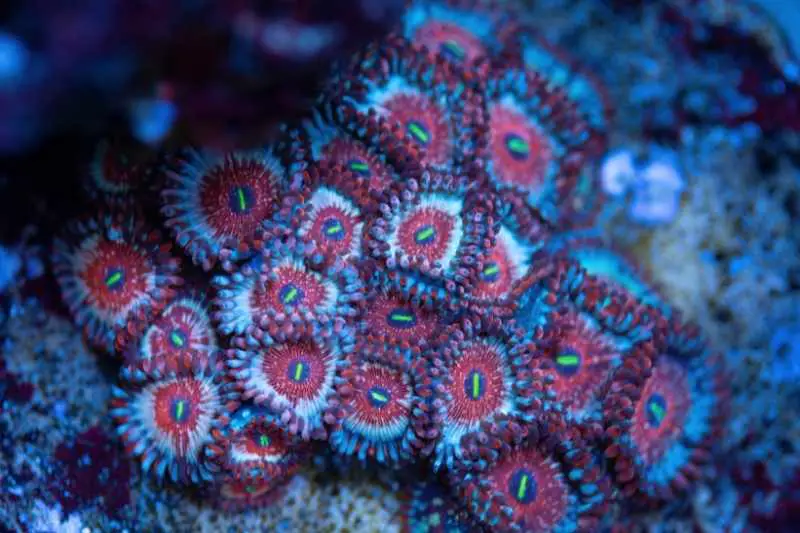
Here is a table of the 27 Best beginner corals, along with a summary of their relative aggressiveness (extent to which you can place them near other corals), placement, lighting, and water flow needs.
| Beginner coral | Placement | Lighting needs | Water flow | Aggression |
| 1. Green star polyps | Bottom to middle | Low | Moderate | Peaceful |
| 2. Cabbage leather coral | Bottom | Low | Moderate | Semi-aggressive |
| 3. Kenya tree coral | Bottom | Low | Moderate | Semi-aggressive |
| 4. Toadstool leather coral | Bottom | Low | Moderate | Peaceful |
| 5. Devil’s hand coral | Bottom | Low | Moderate | Peaceful |
| 6. Finger leather coral | Bottom | Low | Moderate | Semi-aggressive |
| 7. Clove polyps | Bottom | Low | Moderate | Peaceful |
| 8. Xenia | Bottom | Low | Moderate | Peaceful |
| 9. Actinodiscus Mushrooms | Bottom | Low | Moderate | Semi-aggressive |
| 10. Rhodactis Mushrooms | Bottom | Low | Moderate | Semi-aggressive |
| 11. Ricordea florida Mushroom | Middle | Moderate | Moderate | Semi-aggressive |
| 12. Zoanthids | Middle | Low – Moderate | Moderate | Semi-aggressive |
| 13. Frogspawn | Bottom to Middle | Moderate | Moderate | Aggressive |
| 14. Torch coral | Bottom to Middle | Moderate | Moderate | Aggressive |
| 15. Hammer coral | Bottom to Middle | Moderate | Moderate | Aggressive |
| 16. Bubble coral | Bottom to Middle | Moderate | Low – Moderate | Aggressive |
| 17. Trumpet coral | Bottom to Middle | Moderate | Moderate | Peaceful |
| 18. Candy Cane coral | Bottom to Middle | Moderate | Moderate | Peaceful |
| 19. Duncan coral | Bottom to Middle | Low | Low | Peaceful |
| 20. Blastomussa coral | Bottom to Middle | Moderate | Low | Peaceful |
| 21. Acan echinata coral | Bottom to Middle | Moderate | Low | Aggressive |
| 22. Acan Lordhowensis | Bottom to Middle | Moderate | Low – Moderate | Semi-aggressive |
| 23. Favia | Bottom to Middle | Moderate | Moderate | Aggressive |
| 24. Favites | Bottom to Middle | Moderate | Moderate | Aggressive |
| 25. Fungia plate coral | Bottom | Moderate | Moderate | Semi-aggressive |
| 26. Plating Montipora | Middle to upper | Moderate – High | Moderate | Peaceful |
| 27. Bird’s Nest coral | Middle to upper | Moderate – High | Moderate | Peaceful |
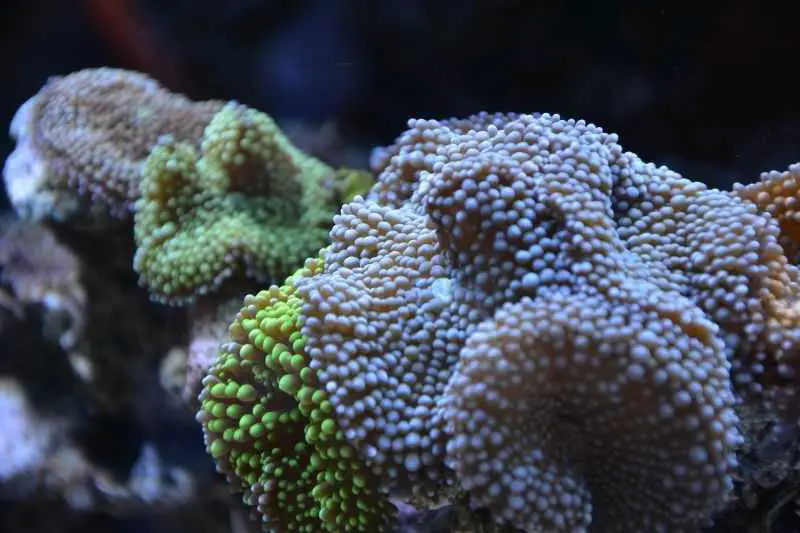
What is the hardiest coral?
In my own personal experience with aquarium corals over two decades, the hardiest coral is the Cabbage leather coral. That coral species has thrived through several days without power in a cold Northeast winter and small self-propagated frags thrive in live rock crevices and in very low light regions of the tank.
Other similarly hardy coral types are Kenya tree corals, Green star polyps and Devil’s hand leather corals.
Which corals should you try first?
All of the coral types in this article could be considered great beginner corals, but even within the list of beginner corals, there are 7 great beginner corals to try first:
- Cabbage leather coral (Sinularia)
- Kenya tree coral (Capnella)
- Green star polyps
- Actinodiscus mushroom corals
- Rhodactis mushroom corals
- Toadstool leather coral
- Zoanthids (start with an inexpensive frag)
You may want to try these 7 great beginner corals first is that they are inexpensive, commonly available, hardy, tolerate aquarium water parameters quite well and are not demanding in terms of lighting and water flow needs. Chances are also great that if you are able to meet any other aquarium enthusiasts in your area they may even have frags of these corals to give away, trade, or sell inexpensively.
Water parameters?
If you are thinking about adding one of these 27 best beginner corals to your saltwater aquarium, you do first want to be sure you have stable, healthy water parameters. Here is a general guide to the most important water parameters:
- Temperature: 73-84 degrees Fahrenheit
- pH: 8.1-8.4
- Salinity: 35 parts per trillion, generally measured as 1.025 specific gravity
- Hardness: 8-12 dkh
- Ammonia: 0 ppm
Learn more about the most important water parameters here.
When to add corals?
If this is your first time adding corals to your tank, the right time to add beginner corals to your saltwater aquarium is:
- At least 2 months after cycling the aquarium and recording water parameters without significant variations in the key water parameters: temperature, pH, salinity, hardness and ammonia
- After demonstrating success keeping your initial beginner saltwater fish healthy, happy, parasite free and alive (for example you won’t want to add corals to the tank if there is evidence of the parasite saltwater ich).
- During a period of time when you are not battling with problematic algae (which sometimes can take up to 6 months after staring your tank)
1. Green star polyps

Green star polyps are one of the best beginner coral types. They glow a vibrant green and are extremely durable. Once you see how easy they are to care for, you may be tempted, like I was to ‘train’ your colony to grow up the vertical surfaces, like overflows and the back tank wall.
Learn more here in the Green Star Polyps Care Guide.
2. Cabbage leather

The Cabbage leather coral is not only one of the best beginner corals on this list, it also takes the prize as the hardiest coral on the list. I have had a colony of cabbage leather corals alive and well for many, many years. They’ve survived power outages and tank crashes.
Learn more about caring for the Cabbage leather coral here.
3. Toadstool leather
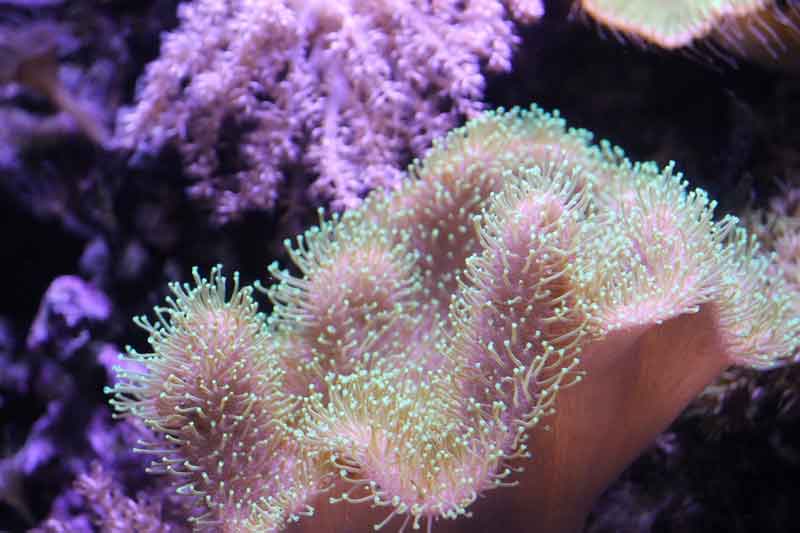
Toadstool leather corals are great beginner corals, for the typical reasons: price, availability, hardiness, but they are also an under-rated coral, in my opinion. They start out small and humble in size (and usually color), but they grow up to be a fantastic and gorgeous specimen, given enough time and the success that I know you will have.
Find out how easy it is to care for the Toadstool coral.
4. Kenya tree coral
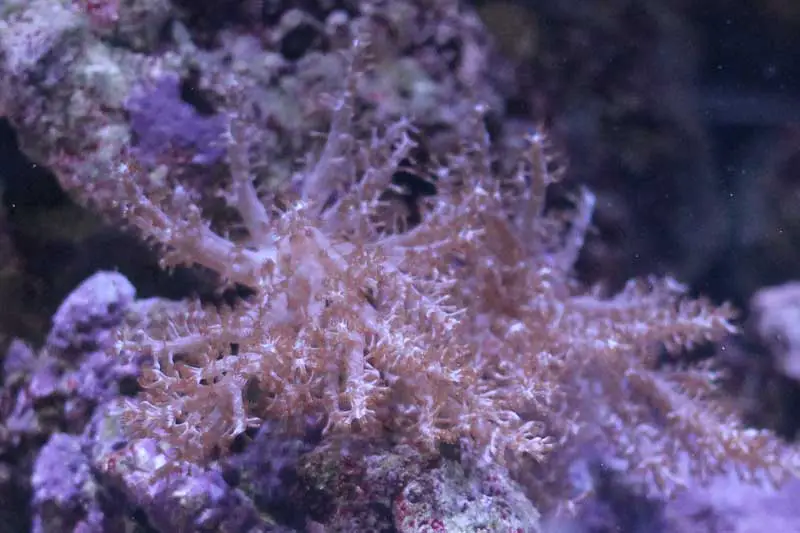
The Kenya Tree coral is very easy to care for. During the daylight hours it inflates with water and flows in the breeze. It is so prolific that it will create clones of itself and start spreading throughout your tank. That is why it is such a great beginner coral. You can probably find local aquarium owners just giving away frags, and before you know it, your tank will be full of colonies.
Because it does reproduce so rapidly, the Kenya Tree coral is a great early coral to add to the tank. As it grows and reproduces, it will help you keep a lid on your water parameters. Your confidence will grow, too, as the coral spreads and then you can make room for other corals on this list.
Check out more care guide information about the Kenya Tree coral and similar Capnella species.
5. Devils hand
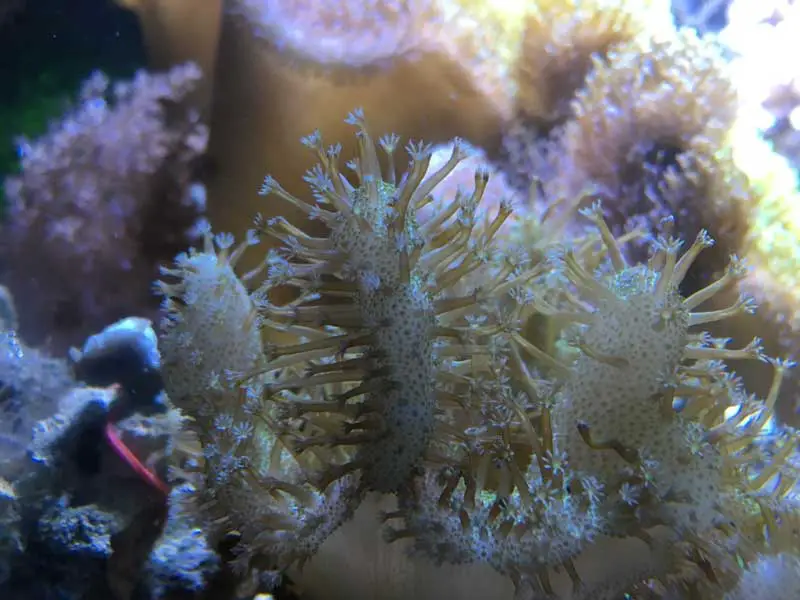
The Devil’s hand coral is another prolific leather coral species that creates its own clones through fragging, which is also called coral propagation. I’ve had these corals in my tank for years. The same parent colony sheds a thumb every so often which creates a brand new coral colony that is genetically identical with the parent.
6. Finger leather coral
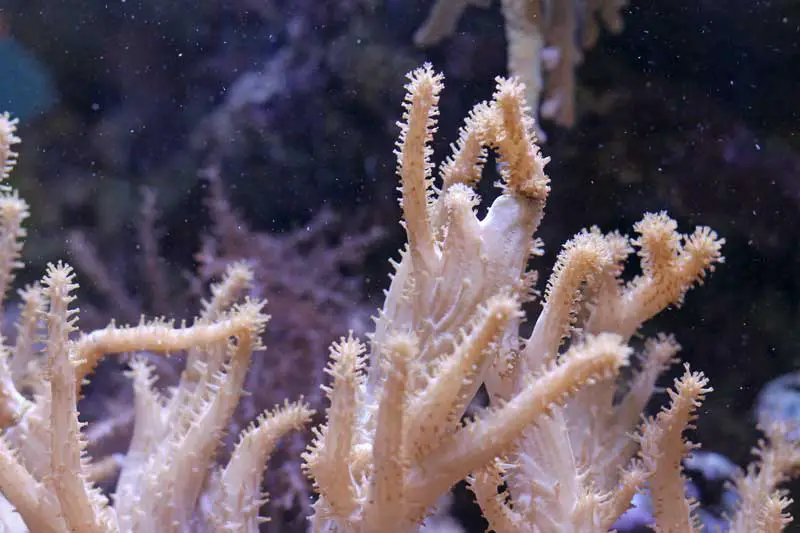
The Finger leather corals (there are multiple species that go by the same common name) look a bit like a hybrid between the Kenya Tree and Devil’s Hand coral. They are equally hardy and equally easy to frag to create a small forest of leather corals to fill in your tank, making them a great beginner coral.
7. Actinodiscus mushrooms
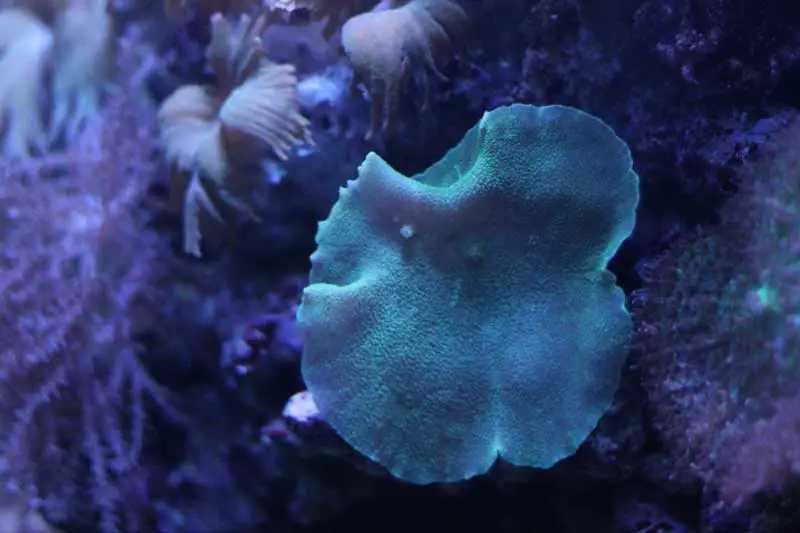
Actinodiscus corals are another easy-to-care-for species that generally does best in lower, more subdued lighting regimens. In the lowest light areas, the growth form will actually look a bit more like a toadstool as the coral stretches up to the light. They will often be fine, even under conditions like that, but may do best if you can increase the lighting intensity gradually, if you see this behavior.
They reproduce by sending out a small piece of their stalk/foot. The foot creeps out over a few days out from under the disc and then eventually grows it’s own mushroom top.
Learn more about how to care for Actinodiscus Mushroom corals here.
8. Rhodactis mushroom
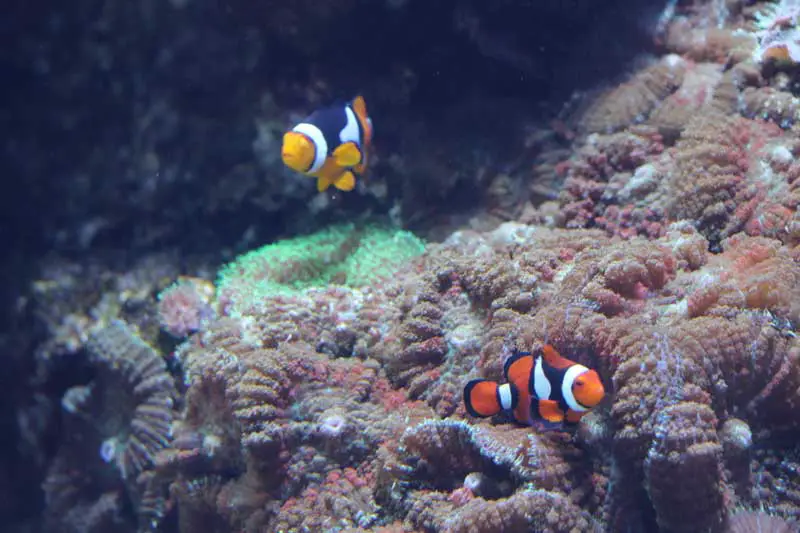
Rhodactis mushrooms are very similar to the Actinodiscus ‘shrooms, in terms of care. You may want to choose them over the other types if you like the fuzzy appearance. Their disck surface is covered by tiny papillae, as you can see in the image above of some Percula clownfish that are hosting in them like an anemone.
See care guide instructions for Rhodactis Mushroom coral species, a great beginner coral
9. Ricordea
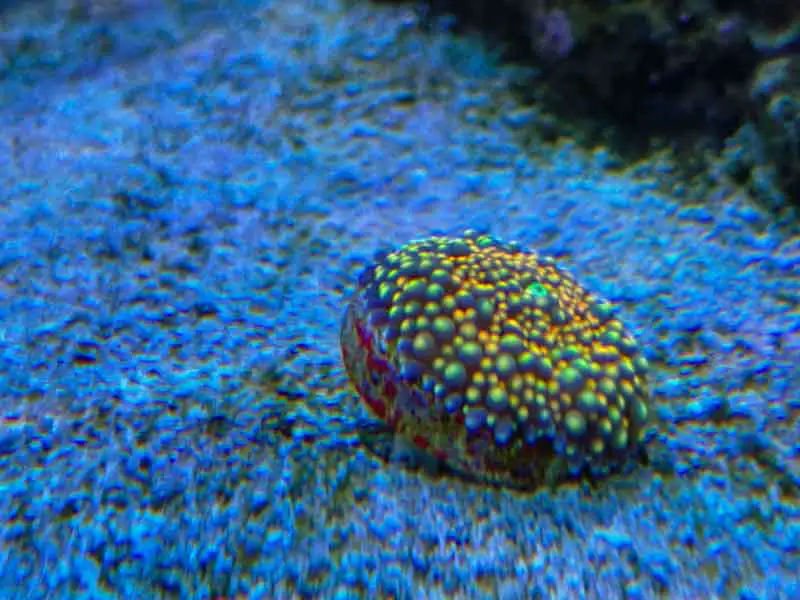
The Ricordea is the Queen of the Mushrooms. They have vibrant, almost electric coloration sometimes. They do require a bit more light than their more mundanely colored cousins and are the most difficult to care for…of the mushroom corals…but should still be within the capabilities of a beginner. Just be sure you’re picking a Ricordea florida species and not the notoriously picky Ricordea yuma.
Learn more about Ricordea corals here.
10. Clove polys
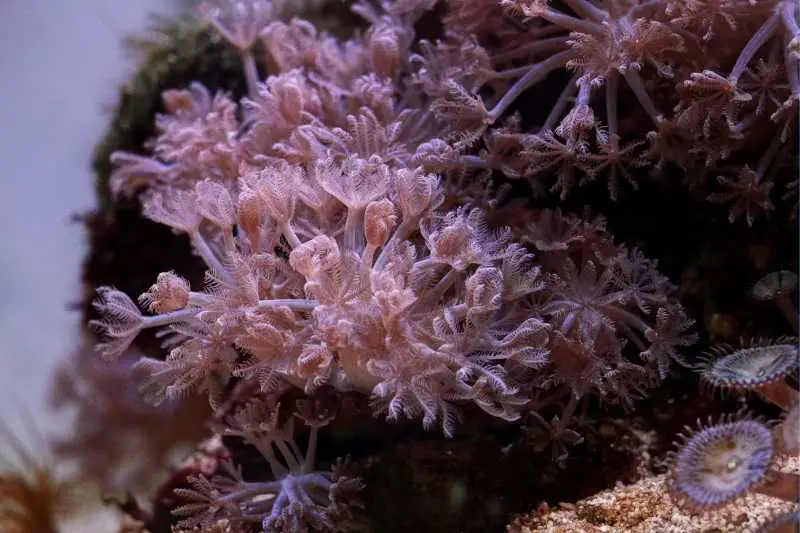
Clove polyps are a great beginner coral and are a close cousin to the Pulsing Xenia coral, which you will see below. The large, soft coral polyps take on an almost feather-like appearance, which is what attracts many people to add them to their tanks.
Learn all about this great beginner coral in the Clove Polyps care guide.
11. Xenia
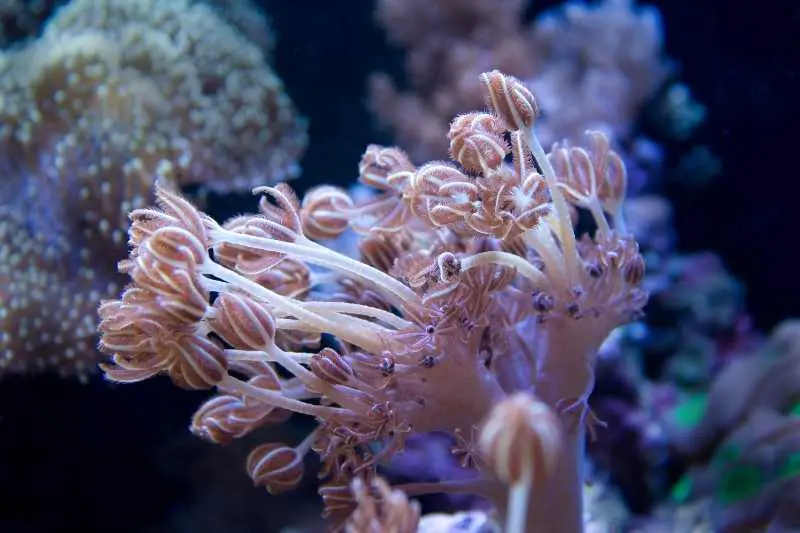
If you have never seen the Xenia coral in real life, the first time you do, be careful, because it may blow your mind. I’m sure you can picture the rhythmic swaying of soft coral polyps in the current, but Xenia takes this to a whole other level.
They are sometimes called Pulsing Xenia because each individual polyp will open and close on it’s own. It looks like each one is ‘breathing’. It’s a mesmerizing behavior to get a chance to see. Combine that with the fact that they are generally hardy and one of the best beginner corals.
This care guide has all the info you need to grow Xenia coral in your reef tank.
12. Zoanthids
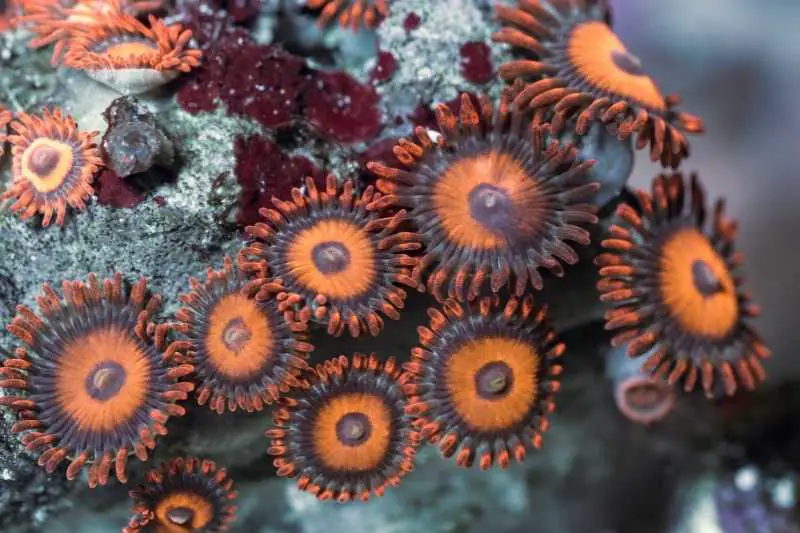
None of the other coral types on this list of the 27 Best Beginner Corals can give you access to wide range of psychedelic corals like the Zoanthids can. When you first start off, I do recommend you begin with a less expensive (and likely less vibrantly colored) Zoanthid type, to keep costs down while you’re learning.
Before you know it, you’ll have your own gorgeous Zoanthid garden.
Check out these other great article All about Zoanthids
13. Frogspawn
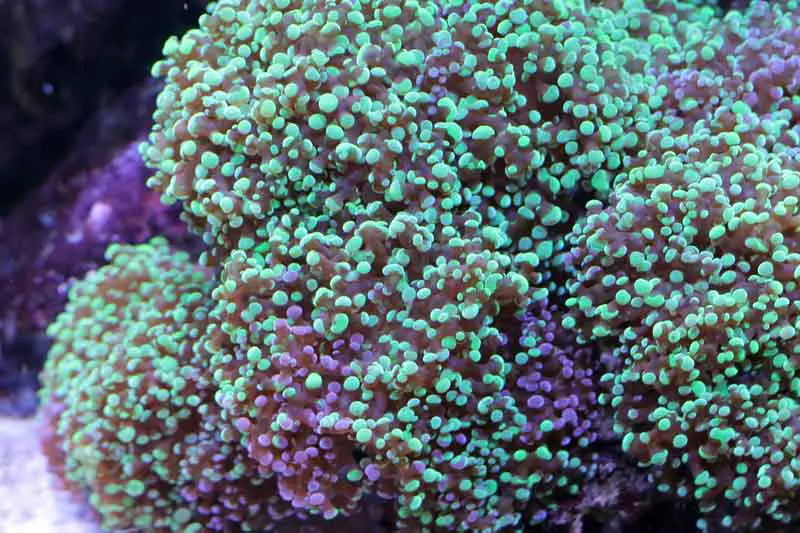
Learn more about the Frogspawn coral, one of the largest colonies of corals currently in my tank.
14. Torch
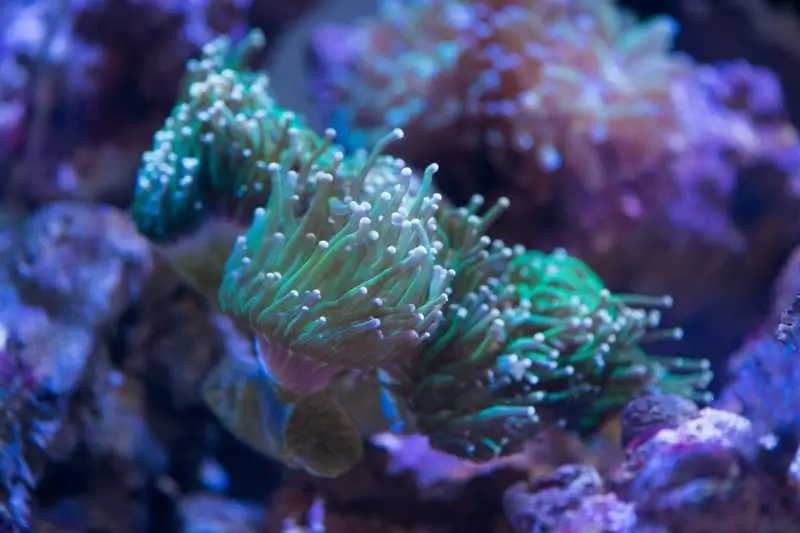
The Torch coral is very popular these days. Check out more here.
15. Hammer
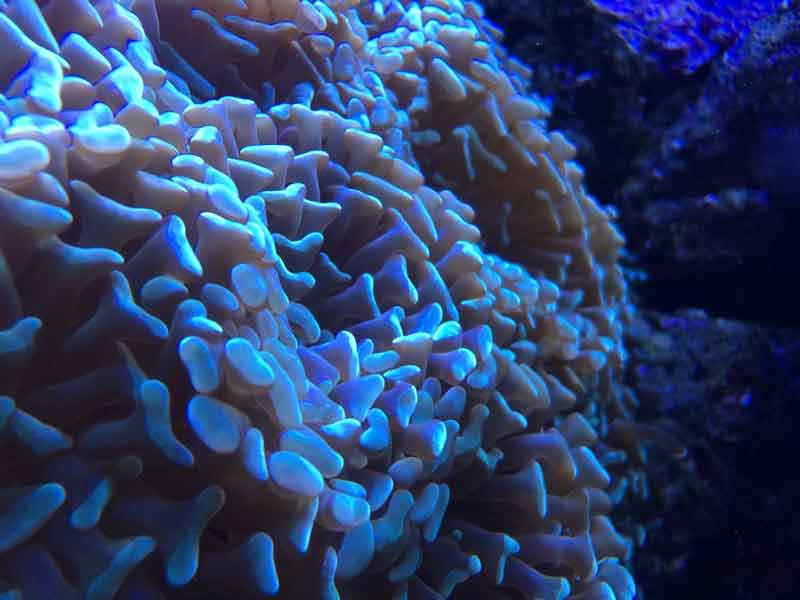
The Hammer Coral was the LPS that started it all for me. Find care instructions and more here.
16. Bubble

They may look delicate, but they can also be quite resilient. Learn all about Bubble corals here.
17. Trumpet
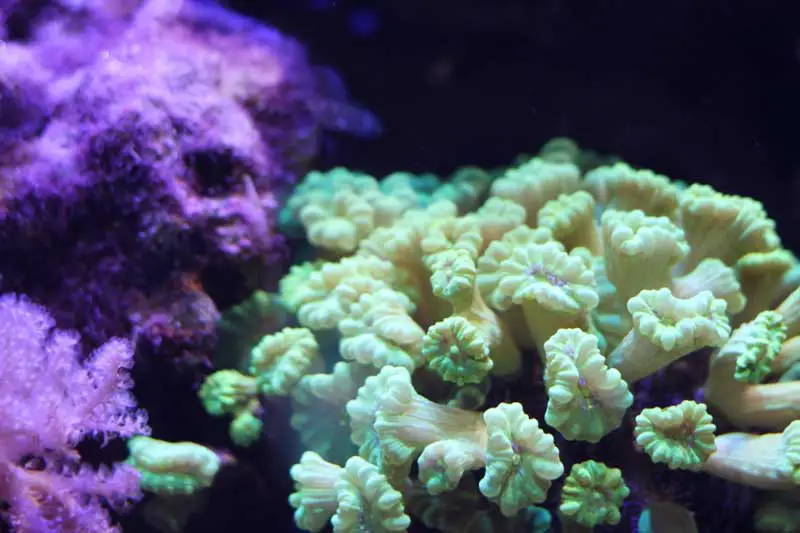
See what it takes to make the Trumpet Coral harmonize in your tank.
18. Candy cane
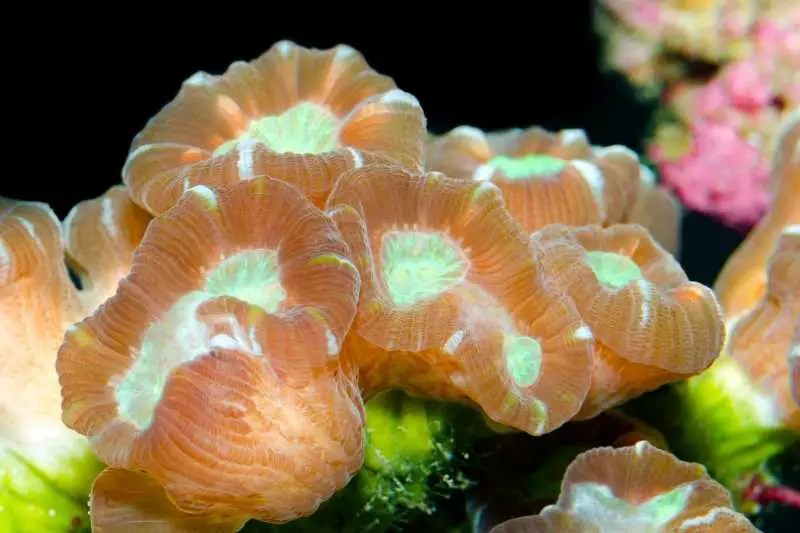
Learn about caring for the Candy Cane coral here.
19. Duncan
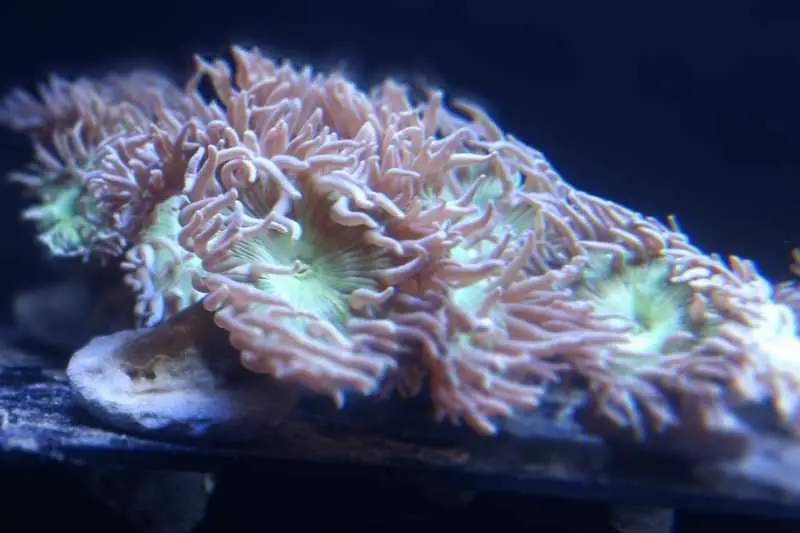
A friend of mine a few years back used to curse his Duncan corals because they were so hardy and prolific.
Learn what it takes to care for Duncan corals here.
20. Blastomussa
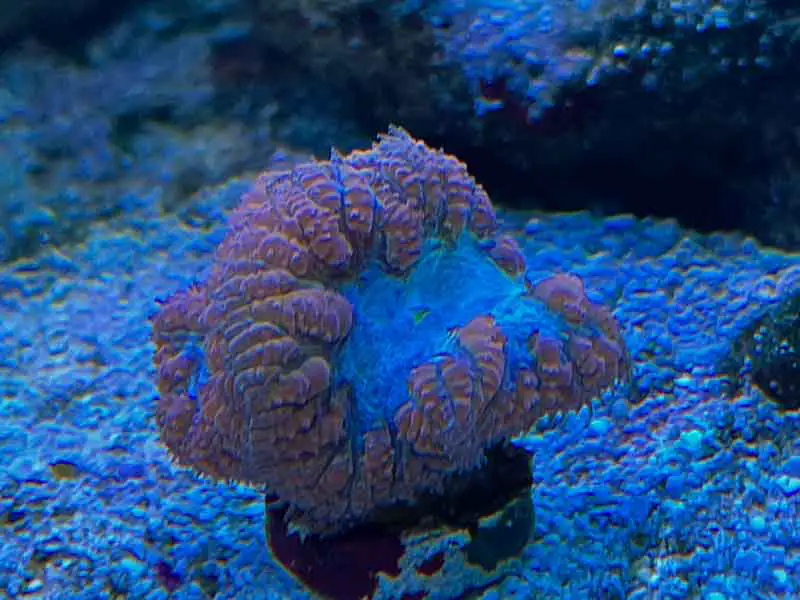
Blastomussa corals are gorgeous and hardy LPS corals.
Check out these tips, tricks and advice for keeping Blastomussa corals.
21. Acan echinata
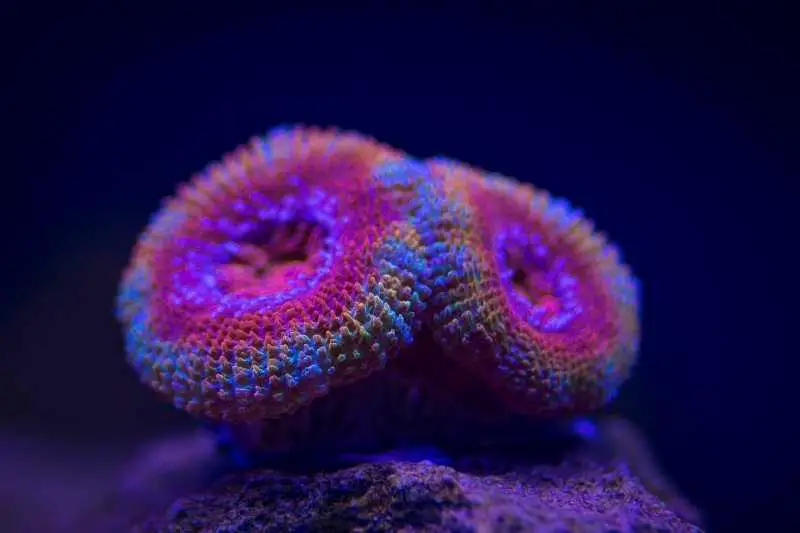
See what it takes to care for this lesser known Acan coral species.
22. Acan lords
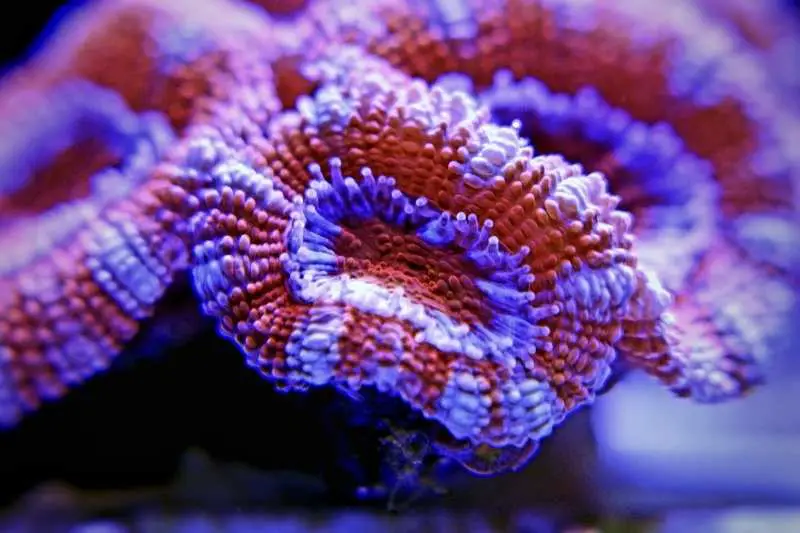
Dive a bit deeper into the care for one of the most popular corals, the Acan Lords (Aussie Lords)
23. Favia
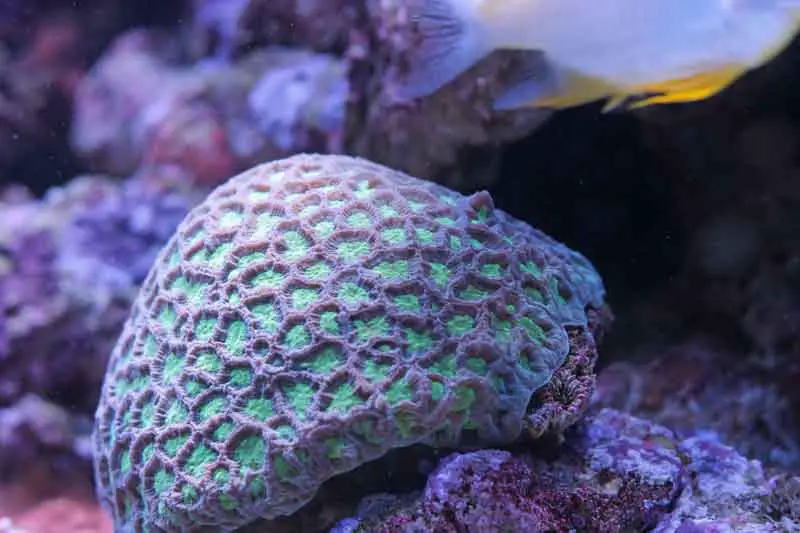
Check out this article on caring for Favia corals.
24. Favites

Learn what the difference is between Favia and Favites and how to care for them.
25. Fungia plate
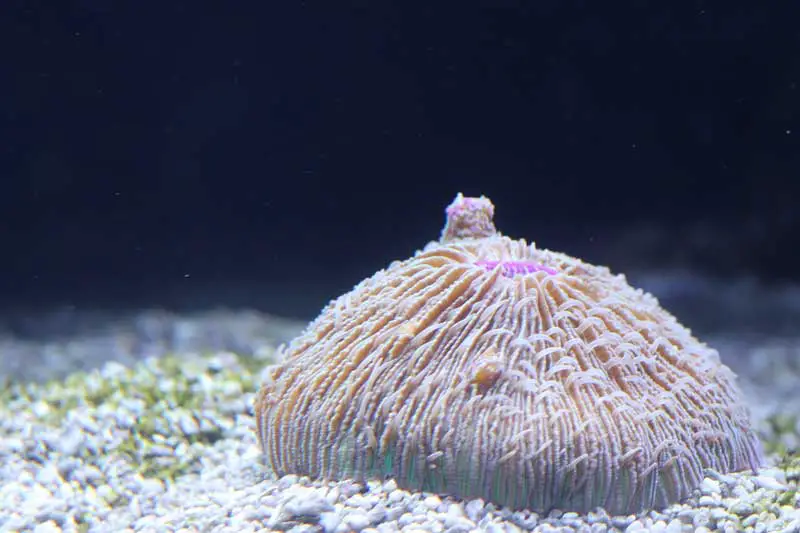
Fungia plate coral care instructions.
26. Montipora plating
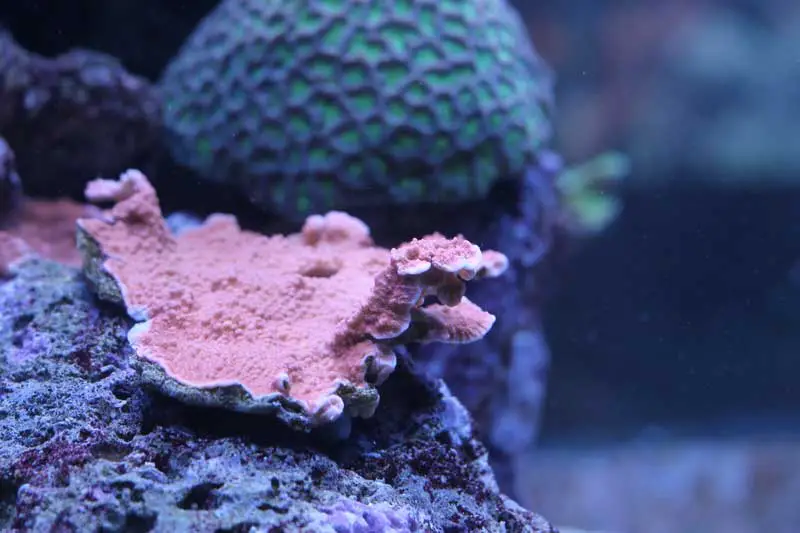
Learn all about Montipora corals here.
27. Birds nest
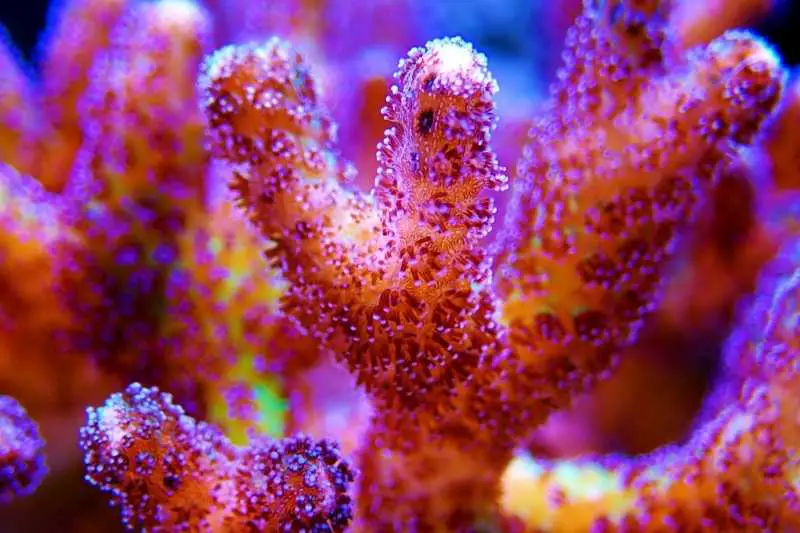
Bird’s Nest corals are one of the best beginner SPS corals. Learn more about them here.
List of the 27 Best Beginner Corals
- Green star polyps
- Cabbage leather
- Toadstool leather
- Colt coral
- Devil’s hand
- Finger leather coral
- Clove polys
- Xenia
- Actinodiscus mushrooms
- Rhodactis mushroom
- Ricordea florida
- Zoanthids
- Frogspawn
- Torch
- Hammer
- Bubble
- Trumpet
- Candy cane
- Duncan
- Blastomussa
- Acan echinata
- Acan Lordhowensis
- Favia
- Favites
- Fungia plate
- Plating Montipora
- Bird’s Nest Coral
To learn more about beginner corals
What to read next
As you continue your journey learning about how to set up a successful saltwater aquarium with aquarium fish and corals, here are a few other top articles that have helped readers:
- 20 Most popular saltwater fish
- Best algae-eating saltwater fish
- Best LPS Corals for Beginners
- 11 Great low light corals


Leave a Reply